- Getting Started
-
by k.mammasis
Functional foods are foods that have specific health benefits beyond their basic nutritional value. These foods contain bioactive compounds, such as vitamins, minerals, fiber, and phytochemicals, that provide health benefits beyond the basic nutrients. To maximize the health benefits of functional foods, here are some tips on how to consume them:
- Choose whole foods: Focus on consuming whole and minimally processed functional foods. This means choosing fresh fruits and vegetables, whole grains, lean proteins, and healthy fats.
- Variety is key: Eating a variety of functional foods ensures that you are getting a wide range of nutrients and phytochemicals. Mix it up by incorporating different colors, textures, and flavors in your meals.
- Eat seasonally: Choose fruits and vegetables that are in season. They are often fresher and more flavorful, and may contain higher levels of nutrients.
- Pay attention to portions: While functional foods are healthy, consuming too much of anything can be harmful. Make sure to watch your portion sizes and balance your meals.
- Avoid processed foods: some foods that come in packaged, processed forms often contain added sugars, unhealthy fats, and other additives that can counteract their health benefits.
- Cook properly: Some functional foods, such as cruciferous vegetables, may lose their health benefits if overcooked. Learn how to properly cook and prepare functional foods to maximize their nutrient content. Tip to remember: never apply any heat to functional foods.
- Combine with other healthy habits: Eating functional foods is just one part of a healthy lifestyle. Make sure to also prioritize regular exercise, stress management, and adequate sleep for overall health and wellness.
It’s important to remember that functional foods should not be used as a replacement for a healthy and balanced diet. Rather, they should be consumed as a part of a balanced diet to enhance overall health and wellbeing.














 MILESTONE® Food for your Genes
MILESTONE® Food for your Genes